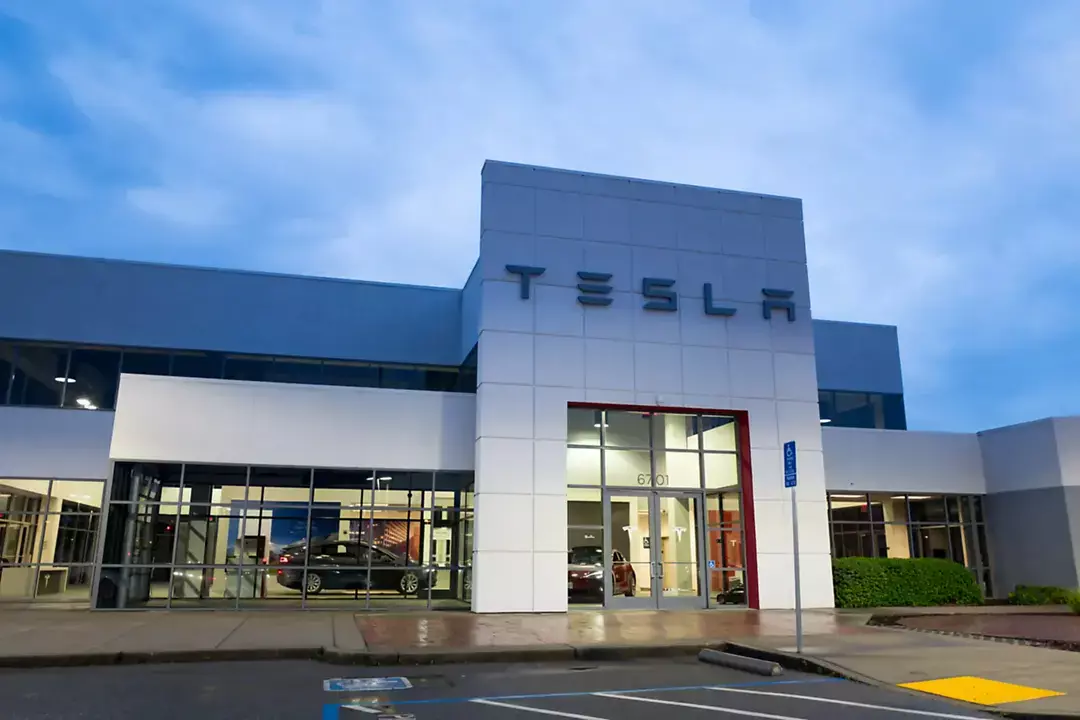
Tesla Bulls Hold Firm as Daiwa Cuts Estimates after Q2 Miss
Tesla’s second-quarter financial report was met with a mix of disappointment and optimism, as the company’s stock price remained buoyant despite a slew of negative news. The electric vehicle (EV) giant missed analyst estimates, with revenue falling 12% year-over-year (YoY) and margins slipping. Furthermore, Tesla acknowledged delays in the development of its highly anticipated Optimus robot. Yet, the stock’s price remained resilient, with sentiment on Stocktwits remaining “bullish” amid high message volume.
Daiwa Securities, a prominent research firm, was among the first to cut its estimates for Tesla’s 2025 and 2026 profit targets. The firm cited the company’s Q2 miss as a key factor, as well as concerns over the impact of declining margins on its profitability. Daiwa reduced its 2025 earnings per share (EPS) estimate by 14% to $4.25, while its 2026 EPS estimate was cut by 10% to $5.50.
Despite these cuts, Tesla’s stock price remained surprisingly resilient. The company’s shares opened lower on the day of its earnings release, but quickly recovered to trade above their pre-earnings levels. This resilience can be attributed to the continued enthusiasm of retail traders, who have been driving the stock’s price upwards in recent months.
Stocktwits sentiment analysis provides valuable insights into the thoughts and opinions of these retail traders. According to the platform, Tesla’s stock was the subject of intense discussion, with a high message volume indicating a strong sense of conviction among traders. The majority of messages were bullish, with many traders expressing confidence in the company’s long-term potential.
So, what is driving this optimism? For many traders, the key to Tesla’s future success lies in its robotaxi and AI initiatives. The company has made significant strides in these areas, with its Full Self-Driving (FSD) technology already being tested on public roads. The potential for Tesla’s FSD to disrupt the traditional taxi industry is massive, with many experts predicting that autonomous vehicles will become a major force in the transportation sector in the coming years.
Tesla’s AI capabilities are also a major area of focus, with the company’s neural networks being used to improve the performance of its vehicles. AI is a critical component of the company’s autonomous driving technology, and its advancements are likely to have a significant impact on the development of FSD.
Another factor contributing to the bullish sentiment is Tesla’s strong financial position. The company has a significant war chest of cash, with a net cash balance of over $20 billion at the end of Q2. This provides it with the resources needed to invest in its growth initiatives, including the development of its robotaxi and AI technologies.
Tesla’s ability to generate significant cash flow is also a major plus. The company’s operating cash flow for the quarter was $2.5 billion, which is a testament to its ability to maintain a strong financial position. This cash flow generation will be critical in the coming years, as Tesla invests heavily in its growth initiatives and continues to expand its product line.
In conclusion, despite a Q2 miss and profit estimate cuts from Daiwa, Tesla’s stock price remained resilient, driven by the enthusiasm of retail traders and the company’s strong financial position. The key to the stock’s future success lies in its robotaxi and AI initiatives, which have the potential to disrupt traditional industries and drive long-term growth.





